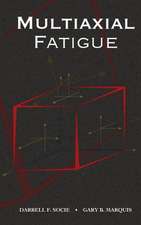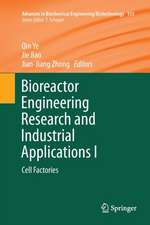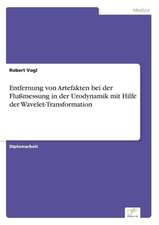On-Line Fault Detection and Supervision in the Chemical Process Industries 1998: IFAC Proceedings Volumes
Autor P.S. Dhurjati, Sylvie Cauvinen Limba Engleză Paperback – 19 oct 1998
A second trend that makes this field relevant in today's world is the increasing emphasis on environment and safety. Community activism and accidents such as those in Bhopal, India have caused media spotlights to be turned on the smallest of toxic releases or loss of life due to chemical accidents. The negative publicity generated by such events as well as the need to maintain the image of an environmentally conscious company make industry more sensitive to the issues of early detection of faults.
The third trend that makes this field very relevant is that of the globalization of the world economy. Increasing globalization of the chemical process industry puts pressure on economic competitiveness and higher productivity. This implies reduced down-time due to faults, quick and flexible response of production to supply and demand changes, increasing reliance on automation and reduced personnel.
Din seria IFAC Proceedings Volumes
- 27%
 Preț: 867.95 lei
Preț: 867.95 lei - 23%
 Preț: 524.55 lei
Preț: 524.55 lei - 23%
 Preț: 640.05 lei
Preț: 640.05 lei - 23%
 Preț: 558.74 lei
Preț: 558.74 lei - 27%
 Preț: 741.03 lei
Preț: 741.03 lei - 23%
 Preț: 491.41 lei
Preț: 491.41 lei - 23%
 Preț: 481.23 lei
Preț: 481.23 lei - 23%
 Preț: 507.61 lei
Preț: 507.61 lei - 23%
 Preț: 682.45 lei
Preț: 682.45 lei - 23%
 Preț: 569.48 lei
Preț: 569.48 lei - 20%
 Preț: 590.37 lei
Preț: 590.37 lei - 23%
 Preț: 427.67 lei
Preț: 427.67 lei - 27%
 Preț: 732.93 lei
Preț: 732.93 lei - 23%
 Preț: 477.99 lei
Preț: 477.99 lei - 23%
 Preț: 506.70 lei
Preț: 506.70 lei - 23%
 Preț: 692.36 lei
Preț: 692.36 lei - 23%
 Preț: 485.96 lei
Preț: 485.96 lei - 23%
 Preț: 440.86 lei
Preț: 440.86 lei - 23%
 Preț: 501.31 lei
Preț: 501.31 lei - 23%
 Preț: 468.63 lei
Preț: 468.63 lei - 27%
 Preț: 779.39 lei
Preț: 779.39 lei - 27%
 Preț: 869.57 lei
Preț: 869.57 lei - 27%
 Preț: 868.97 lei
Preț: 868.97 lei - 27%
 Preț: 873.23 lei
Preț: 873.23 lei
Preț: 667.45 lei
Preț vechi: 866.82 lei
-23% Nou
Puncte Express: 1001
Preț estimativ în valută:
127.72€ • 136.57$ • 106.49£
127.72€ • 136.57$ • 106.49£
Carte tipărită la comandă
Livrare economică 18 aprilie-02 mai
Preluare comenzi: 021 569.72.76
Specificații
ISBN-13: 9780080432335
ISBN-10: 0080432336
Pagini: 408
Dimensiuni: 210 x 297 x 22 mm
Greutate: 1 kg
Editura: ELSEVIER SCIENCE
Seria IFAC Proceedings Volumes
ISBN-10: 0080432336
Pagini: 408
Dimensiuni: 210 x 297 x 22 mm
Greutate: 1 kg
Editura: ELSEVIER SCIENCE
Seria IFAC Proceedings Volumes
Cuprins
Section headings and selected papers: Plenary Papers. Contributions from the community IT programme (P. Corsi). Trend Analysis. Process trend analysis using wavelet-based de-noising (A. Bakhtazad et al.). Observers. Non-linear observer based method for fault detection and isolation (F. Armanet et al.). Detect unexpected changes of particle size distribution in paper-making white water systems (H. Wang). Applications. Observing the sugar-beet quality using process and signal analysing methods (A. Arenz et al.). Different Approaches. A generic fault propagation modeling approach to on-line diagnosis and event correlation (G.M. Stanley, R. Vaidhyanathan). Can chemical process industry benefit from analog electronics diagnosis methods? (P. Taillibert). Neural Networks. Fault detection in paper making (a neural network approach) (Y. Bissessur et al.). Statistics/Reconciliation. Univariate and multivariate process monitoring and improvement (A. King et al.). An industrial application of principal component test to fault detection and identification (H. Tong, D. Bluck). Qualitative. Automated interpretation of PCA-based process monitoring and fault diagnosis using signed digraphs (H. Vedam, V. Venkatasubramanian). Fault diagnosis expert system with probability calculations (D. Leung, J. Romagnoli). Supervision/Control/Alarm. Early detection of alarm situations using model predictions (B.C. Juricek et al.). Poster Papers. Suboptimal conditions for leakage detectability in pipelines (C. Verde, F. Ibinarriaga). Comparison of the performances of parametric estimation, time-frequency, wavelet and segmentation with detection of abrupt changes in non-destructive evaluation (S. Femman, N.K. M'Sirdi). New intrinsic runaway criteria and their application to the model-based on-line monitoring of continuous and discontinuous reactors (T. Obertopp et al.)
























